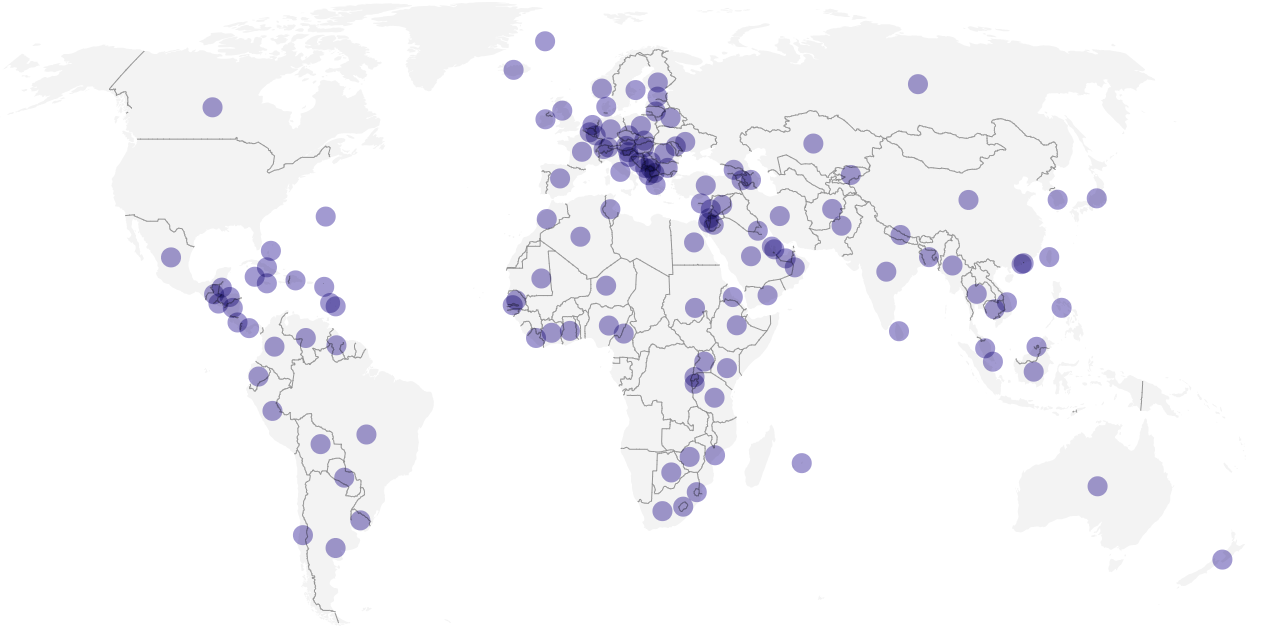Like many universities, NU sees decrease in international graduate student enrollment
February 19, 2019
Like many universities nationwide, Northwestern saw a decrease in enrollment of new international graduate students last fall, according to new data published by the International Office last week.
Still, total international student enrollment rose more than 10 percent to 4,332, according to the report.
The numbers mirror trends nationwide, as the total number of international students in the U.S. continues to rise, making the country the number one spot for students globally. But as enrollment of new international students begins to decline, higher education groups are raising concerns that the U.S. is becoming less welcoming for these students.
In an interview last November, University President Morton Schapiro expressed confidence that the decline in new enrollments would hit other schools harder than research universities like Northwestern. “It tends to come from less prestigious institutions,” he said, referring to findings in a November 2018 report that research universities saw an uptick in new enrollment, while less selective schools experienced a decline.
But the new data suggests Northwestern isn’t safe from the declining trend. When asked what he thought was contributing to this reduction in new international students, Schapiro pointed to the report, which found that the social and political environment in the U.S. presented challenges to international student recruitment.
“It might be a little bit more of a hassle (to get) a visa, but it’s not something you can’t get,” he said. “So it’s more like, ‘Is this country welcoming to people from other countries?’”
International graduate student enrollment dropped by 314 students in 2018 –– declining for the fourth year in a row since 2015. Undergraduate international student enrollment, on the other hand, slightly increased by 15 students. For both new undergraduate and graduate enrollment, most students came from China: 21 percent and 51 percent, respectively.
25 percent of the total international undergraduate student population comes from China, followed by India at 12 percent, South Korea at 10 percent, Canada at 7 percent, Turkey at 6 percent and Singapore at 3 percent.
An undeclared major was the most common among international undergraduate students at 21 percent. The second most popular major was econometrics and quantitative economics at 10 percent, followed by industrial engineering at 9 percent, journalism at 6 percent and computer science at 6 percent.
The most common country of origin for international academic masters students was also China, at 21 percent. India followed at 6 percent, South Korea and Canada 2 percent and Chile at 1 percent.
Computer science was the overwhelmingly popular major among international academic masters students with 66 percent of students enrolled in the program. Engineering/industrial management was second most popular at 31 percent, journalism at 30 percent, bioengineering and biomedical engineering at 21 percent and applied mathematics at 19 percent.
Even more international professional masters students came from China, at 43 percent. The second most common country of origin was South Korea and Canada at 15 percent, then Taiwan at 4 percent.
Among doctoral students, 39 percent came from China, followed by 8 percent from India, 6 percent from South Korea, 5 percent from Canada and 3 percent from Turkey.
Email: [email protected]
Twitter: @ck_525

